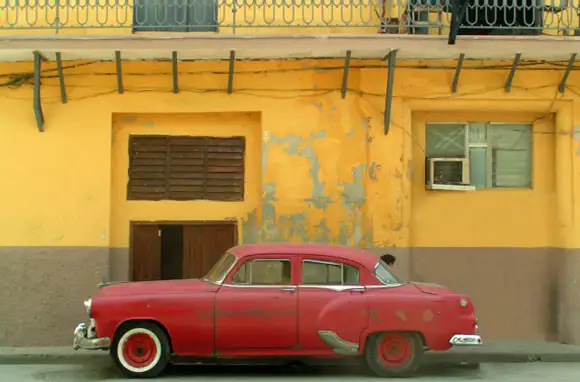
Just 90 miles from Key West, Cuba has been forbidden fruit for most Americans since the 1960s. But travel restrictions were eased somewhat in 2011, and visiting Cuba is much easier than you think. Just as elsewhere in the Caribbean, the island offers UNESCO World Heritage sites, 16th-century fortresses, inviting sand beaches, four-star hotels and resorts, and the sounds of salsa. But unlike other islands, Cuba is an open-air museum of vintage Studebakers, DeSotos, Plymouths, Chevys, and Caddies, as well as a fascinating mix of crumbling mansions and freshly renovated architectural gems that predate Castro and the Cuban Revolution.
Here’s a primer on must-sees if you get a chance to visit in the near future.
Image Gallery
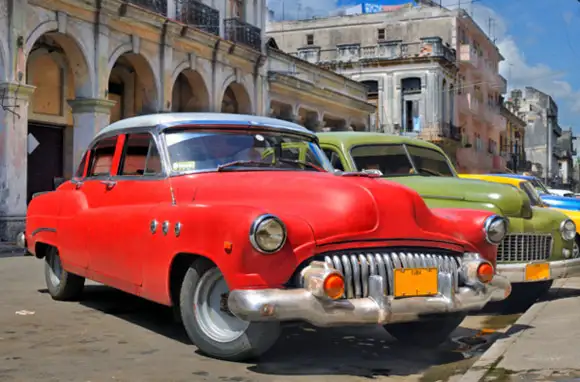
Old Havana
A three-decade restoration project has turned many of Old Havana's neoclassical and art deco buildings into museums, art galleries, and boutique hotels, such as the Hotel Raquel. Wander the Plaza Viejo to enjoy street musicians, Carmen Miranda look-alikes who pose for photos for a peso or three, and children playing stickball. In the Parc de la Fraternite, drivers of vintage vehicles gather daily to trade parts. Watch the sunset from the garden terrace of the elegant Hotel Nacional de Cuba, which you'll share with two canons that bombarded U.S. Naval vessels during the Spanish-American War. The Nacional, built in 1930, is Cuba's most storied hotel. Frank Sinatra and Ava Gardner honeymooned here, and bullet holes from the Cuban Revolution still pockmark the facade.

Old Havana
A three-decade restoration project has turned many of Old Havana's neoclassical and art deco buildings into museums, art galleries, and boutique hotels, such as the Hotel Raquel. Wander the Plaza Viejo to enjoy street musicians, Carmen Miranda look-alikes who pose for photos for a peso or three, and children playing stickball. In the Parc de la Fraternite, drivers of vintage vehicles gather daily to trade parts. Watch the sunset from the garden terrace of the elegant Hotel Nacional de Cuba, which you'll share with two canons that bombarded U.S. Naval vessels during the Spanish-American War. The Nacional, built in 1930, is Cuba's most storied hotel. Frank Sinatra and Ava Gardner honeymooned here, and bullet holes from the Cuban Revolution still pockmark the facade.

Museum of the Revolution (former Presidential Palace)
Havanaâs former Presidential Palace, with an opulent Hall of Mirrors copied from the one in Versailles, displays a piece of an American Lockheed U-2 spy plane shot down during the Cuban Missile Crisis. Now the Museum of the Revolution, it offers a fascinating look at Cuba's history, from its colonization by European powers in the 1700s to the Cuban Revolution.
Also, the Museo de la Plata, one of Havana's oldest houses, is a treasure trove of colonial-era silverwork, swords, and firearms. And El Morro is the 16th-century fortress that guards the entrance to Havana Harbor. There are small, rotating exhibits, but the real attraction is the view of the surf crashing into the rocks nearly 100 feet below.

Partagas Cigar Factory
Tour Havanaâs Partagas Cigar Factory, founded in 1845, where employees sort and cut leaves, and roll and box cigars every day. No cameras are allowed inside, but it's not to protect trade secrets. Workers lost so much time posing for photos that the government simply banned cameras inside the factory. (But be sure to snap a shot of the historic exterior with its Spanish-style facade and lion statues.) Now visitors can take a guided tour of the cigar-making process from single leaf to finished cigar and learn about Partagas' dramatic—and possibly haunted—history before stopping at the on-site smoking room and factory shop. Tickets can be purchased in advance at the neighboring Hotel Saratoga.
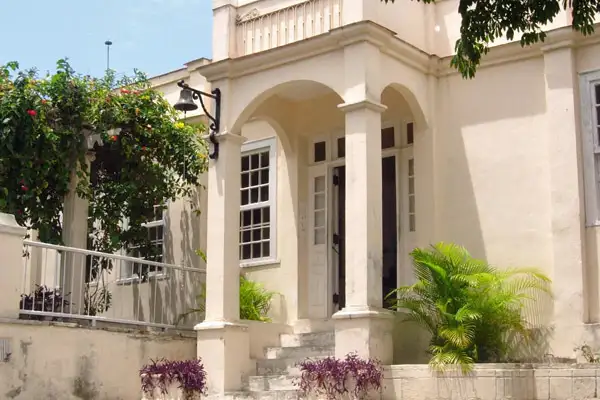
Finca Vigia
Ernest Hemingway's beloved Finca Vigia, just outside Havana, is where he wrote much of For Whom the Bell Tolls. His writing room, complete with typewriter and cup of sharpened pencils, is on the top floor overlooking the sea. It's a sprawling estate filled with his books and trophies, overstuffed sofas, fully stocked bars, and sportfishing vessel, the Pilar, named for his then-wife.
Also, Hotel Ambos Mundos in Old Havana makes the most of its Hemingway connection. The lobby is decorated with photos of Hemingway, including one with Castro, and the hotel offers tours of Room 511, where the author stayed for weeks at a time. Or just take the antique elevator to the rooftop restaurant for a mojito and a view of the harbor.
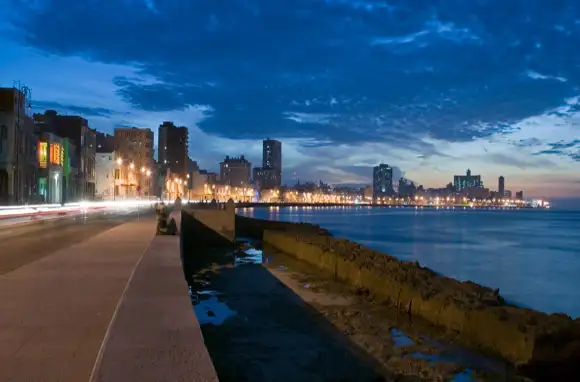
The Malecon
Locals spend their evenings along the Malecon, Havana's harborfront roadway, with guitars, bongos, bottles of rum, and friendly invitations for tourists to join in for a sing-along. Havana's open-air Tropicana nightclub is the original that begat everything Las Vegas made famous. It's ridiculously pricey for Cuba at about $100 per table, even though that includes hotel transfers, VIP seating, and a bottle of rum for every four people. It's a wonderfully hokey throwback to the 1950s, when the show was little more than showgirls parading across the stage in multiple changes of colorful and fancy costumes. For a less expensive night out, Club Habana in the Melia Cohiba offers a nightly show of circus-like acrobats and dancers for about $10 admission, which includes two drinks.

Trinidad De Cuba
Founded in 1514 and declared a UNESCO World Heritage site in 1988, Trinidad de Cuba is a jewel of a city, where wealthy sugar barons and slave traders built fancy homes around the central Plaza Mayor. Those 19th-century homes have been converted into art galleries and museums. One is a museum of archeology, and another, the Palacio Brunet, is filled with period furnishings under hand-carved wooden ceilings. More than a century of foot traffic has smoothed some of the edges off the uneven rocks that pave Trinidad's streets, so sturdy walking shoes are a must. Side streets off the plaza are filled with craft stalls offering fine embroidery and toy-sized papier-mache cars. Trinidad is located on Cuba's south shore, approximately in the middle of the east-west axis of the island.
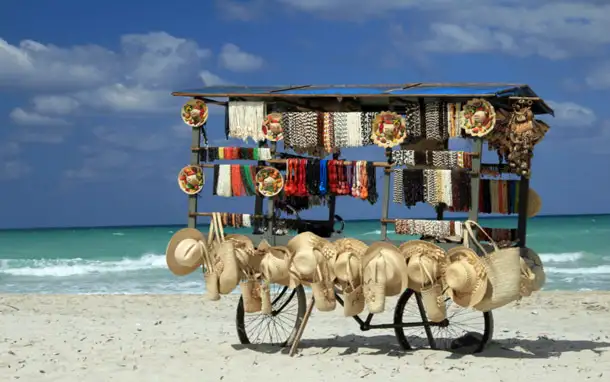
Varadero
Varadero is Cuba's top resort area, featuring nearly 12 miles of white-sand beach, the island's first 18-hole golf course, and all-inclusive hotels run by international chains including Occidental, Melia, Sandals, and Barcelo. Bargain prices relative to elsewhere in the Caribbean make this a popular destination for German, Austrian, Dutch, and Canadian nationals. Besides the beach, there's sportfishing, including bonefishing around the small, unpopulated offshore islands, and pristine coral reefs for scuba diving and snorkeling.
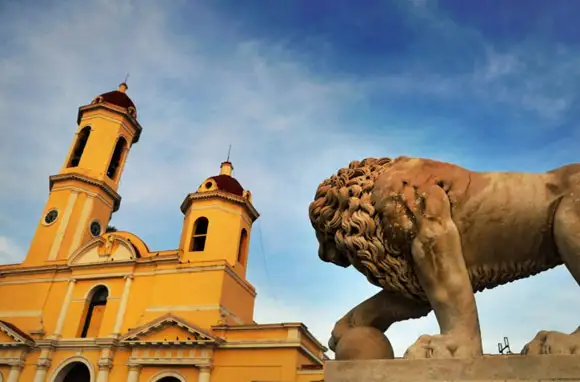
Cienfuegos
Cienfuegos' grid, featuring broad boulevards around a central square, was laid out by French settlers in the 1820s, and lovely colonial architecture still dominates the city center. The Teatro Tomas Terry, where Enrico Caruso and Sarah Bernhardt once performed, still offers music, dance, and theatrical performances. But its real draw is its dreamy Baroque-style interior with wrought-iron balconies reminiscent of New Orleans. The restored Cathedral Cienfuegos and Jagua Castle are also buildings of note. Or, have dinner at Palacio del Valle, an ornate, waterfront, Moorish-style mansion that cost so much to build it bankrupted its owner, a Spanish-born sugar baron. Be sure to climb the stairs to a rooftop cupola for a sweeping view of the city.
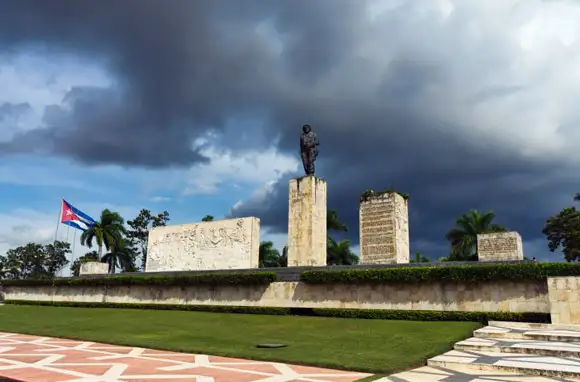
Santa Clara
Santa Clara is the city where Che Guevara led the final battle to overthrow Batistaâs regime in 1958. Even though there's a charming colonial-era downtown, most tourists just visit the sprawling hillside memorial and museum to the iconic revolutionary, which includes his tomb and an eternal flame. The museum also features Che's university diploma, photos of him and Castro, and rifles and other weapons the revolutionaries used to change history. The Monumento del Che is dominated by a huge bronze sculpture of Che on a pedestal, dressed in fatigues and holding a rifle. Santa Clara is an easy day trip from Cienfuegos.

Santiago De Cuba
Santiago de Cuba, on the eastern side of the island, is Cubaâs second-oldest and second-largest city. Its energetic Carnival celebration each July is a two-week festival of Afro-Cuban music, fabulous costumes, and dusk-to-dawn dancing in the streets. Museo Emilio Bacardi, one of Cuba's oldest museums, showcases mummies from ancient Peru and Egypt but little about sugarcane-based beverages, despite the fact that it was built by the Bacardi rum family. The Castillo de San Pedro de la Roca, a fortress built in the 1500s, is worth seeing for its architecture and permanent exhibit on Santiago's role in the Spanish-American War, particularly the sinking of the U.S.S. Maine in 1898.
You might also like:
We hand-pick everything we recommend and select items through testing and reviews. Some products are sent to us free of charge with no incentive to offer a favorable review. We offer our unbiased opinions and do not accept compensation to review products. All items are in stock and prices are accurate at the time of publication. If you buy something through our links, we may earn a commission.
Top Fares From
Today's Top Travel Deals
Brought to you by ShermansTravel
France: 8-Night Paris, Avignon & Nice...
Infinity Worldwide Vacations
 vacation
$2880+
vacation
$2880+
Poconos: 3 Nts in Garden of...
ResortsAndLodges.com
 hotel
$305+
hotel
$305+
7-Nt Canada & New England Cruise,...
Princess Cruises
 cruise
$839+
cruise
$839+



